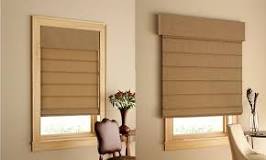Inside Mount means that you will be installing your new blinds inside your window frame.
Outside Mount means that you will be installing your new blinds outside your window frame, either on wall or ceiling.

Inside Mount means that you will be installing your new blinds inside your window frame.
Outside Mount means that you will be installing your new blinds outside your window frame, either on wall or ceiling.
Inside Mount
WIDTH: Measure the width of the window opening in 3 places (top, middle, and bottom). Take the smallest of the 3 measurements (rounded to the nearest 1/8 inch) and write it down. This is the width you will order. Do not make any deductions! The factory will make any necessary deductions.
HEIGHT: Measure the window opening height in 3 places (left, middle, right) but this time take the largest measurement (rounded to the nearest 1/8 inch). This is the height you will order. The factory will make no deductions or additions to the length measurement. NOTE: THIS DOES NOT APPLY TO VERTICAL BLINDS. FOR VERTICAL BLINDS, IT WOULD BE THE SMALLEST.
Outside Mount:
WIDTH: Measure the width of the window opening from left to right and add 4"to 6" for maximum light gap coverage and privacy. If the shade is to be mounted to trim or framing around the window measure from the trim's outside edge left to right. Keep in mind that on roller shades the factory will NOT make deductions from your measurements on both the barrel and fabric. Once you determine the desired width (rounded to the nearest 1/8 inch) write it down.
HEIGHT: To determine the height measure the window opening from top to bottom and add 2" to 4" inches to this measurement to allow space for mounting brackets above the opening.
